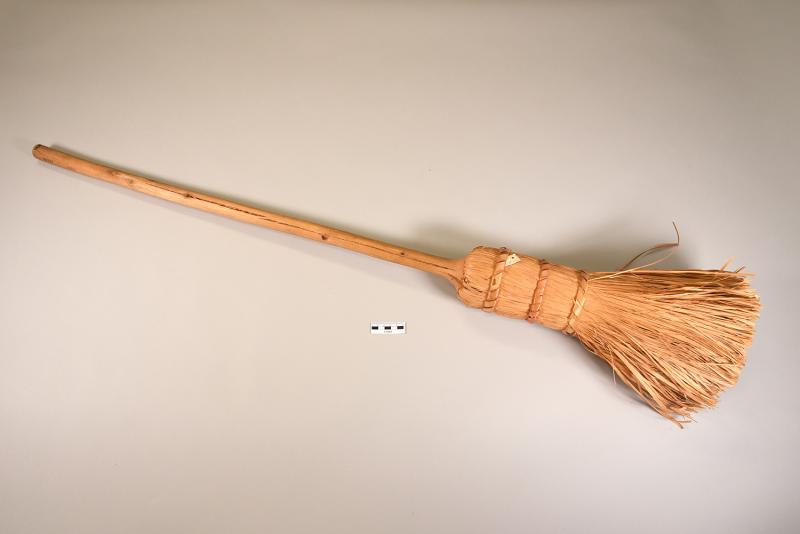Broom
When Volney Jones saw a wooden broom for sale in a store on Walpole Island, he asked who could show him the methods used to make a broom out of a log. Only a few people in the community knew how to make these type of brooms and told Jones that the process was quite labor intensive. Levi Sturgeon agreed to show Jones the techniques he used to make a wooden broom.
Sturgeon chose to make the broom from shagbark hickory (Carya ovata) because it was durable and strips were easily shaved from it. Leaning the log against his leg, Sturgeon used a knife with a curved blade to create thin strips of the wood by shaving from one end of the log. After a large number of strips had been created, the remaining center of the log was cut off. After these strips were folder back around and pounded to get them to lay flat, they were tied with bark to form the inner fibers of the broom. Additional strips were then shaved from the log working in the opposite direction. These strips were folded, pounded, trimmed, and fastened in the same manner. The handle was trimmed to a uniform diameter using a shaving horse. It took Sturgeon, whom Jones describes as “very adept at woodwork,” five hours to make the broom.
The broom was hung to dry in the sun for 24 hours. After it was dry, the strips are cut even thinner and a permanent band was made from black ash splints, using leftovers from basket making. During the drying process, a large crack formed in the handle. Sturgeon told Jones that this was due to the dryness of the wood. Typically, these types of brooms were used to sweep debris from yards and traditional houses with dirt floors.
Jones described the process that Levi Sturgeon used to make this broom in an article, called A Chippewa Method of Manufacturing Wooden Brooms (see resources). To illustrate the steps in the manufacturing process, Jones himself made smaller versions of brooms at various stages in the manufacturing process. He also compared Sturgeon’s broom to others in museum collections and encouraged anthropologists to collect information on wooden broom manufacture. He ends his articles by stating: “As the art of manufacture of wooden brooms seems rapidly being lost, such studies … must be undertaken soon.” When Jones visited Walpole Island in the late 1940s, he if anyone was still making brooms from logs. The people he talked to could not think of anyone who still knew how to make brooms in this way,



